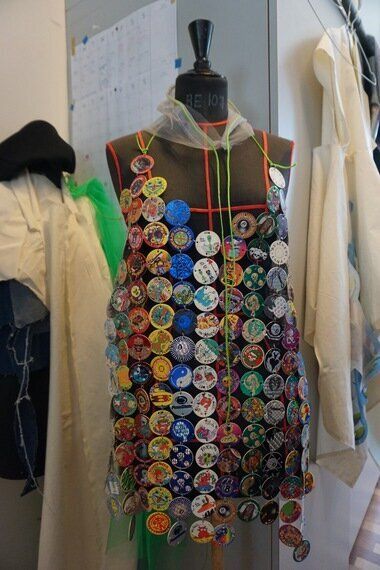
On a recent trip to Copenhagen I paid a visit to the Royal Danish Academy of Fine Art (KADK), where I met a group of BA and MA fashion students working under the tutelage of Ann Merete Ohrt, Head of Programme at the Academy.
The visit resulted from an Instagram exchange between student Nina Balstrup and I, reconfirming the power of social media as a connector and entrepreneurial tool for switched-on creatives. To the work...
Michelle Lyhne Schjerbeck dived, quite literally, into an underwater exploration of our littered oceans, recreating oil slicks and fish nets with locally sourced fabrics for her collection entitled 'Beautiful Disaster'. When quizzed about sourcing materials for this, her final collection before graduating, she explained "It's so hard for us to source sustainable fabrics". "In my process it has become clear how hard it is to make a difference as a fashion student and how hard it is to source materials in an eco-conscious way. Therefore, I have for now chosen to shed light on the matter of water pollution by using textiles and shapes that can represent the issue. I am however hoping that in the future I will be able to work a solution to the issue into my actual designs."
Joining the discussion on textiles and sourcing, Nina Balstrup explains that there are only two quality fabric shops in Copenhagen, making options limited. It strikes me that an alternative approach might be to source materials in general, rather than fabric shop textiles, and plundering neighbouring architecture and art student media might bear fruit. In fact, Michelle has experimented with latex and mixed materials, portraying the idea of ocean waste adhering to the skin. She did experiment originally with actual ocean waste materials, but they proved too soggy and un-salvageable for use in her collection.


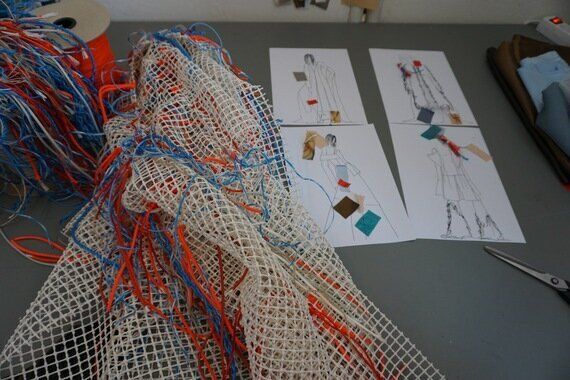
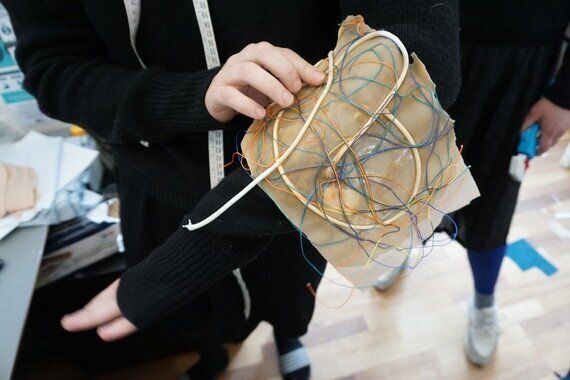
Michelle Lyhne Schjerbeck - "Beautiful Disaster" collection in progress
Morten Alberto Ishøy's final collection 'In desert, creatures appear telling lies' began with an image that posed for him a philosophical question - how can something real look so manufactured - so unreal? In the current climate of fakes (news being at the top of the list), this rumination led to an exploration of objects through a layer, or 'filter' - in this case, clay sculptures vacuum-packed and metamorphosed into other forms. Morten's design ideas are clearly driven by form, rather than textiles or materials. The silhouettes of his collection were sketched from photographs he took of the trapped, skewed and partially melted vacuum packed clay sculptures which he had crafted. At each step of his creative process a translation happens, making it an incremental design approach led by fine art.
Morten elaborates on his process: "Like in the Bible, Torah and the Quran, the prophet's sights are that of blurry human like figures. I have made my silhouettes for the collection by pouring sand on a human behind a plastic curtain and documenting it and then selecting the most interesting shapes. From these I made clay figures and vacuum packed them, making them a blur once again. Out of these experiments I've drawn my collection - inspecting the vacuum packed clay figures closely for details that could be interpreted into garment elements such as lapels, cuffs, etc."



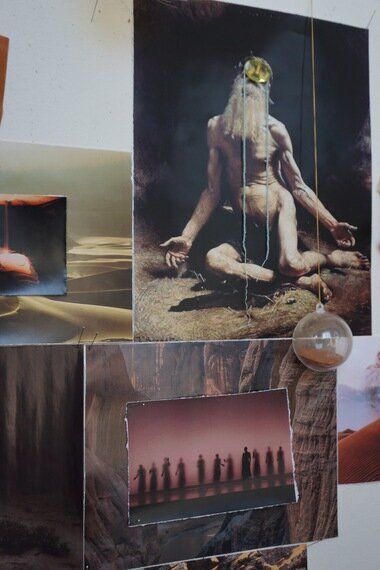
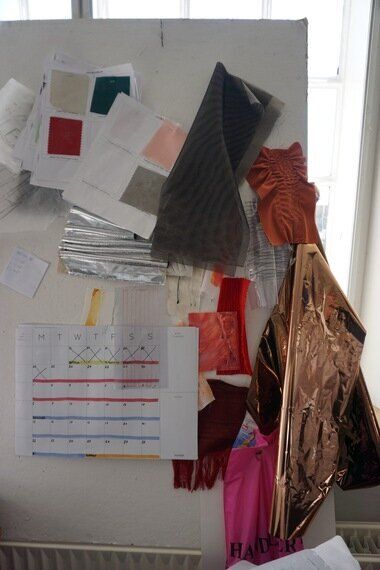
Morten Alberto Ishøy's 'In desert, creatures appear telling lies'
Nina Balstrup's work is a journey through her childhood and an exercise is search and discovery into what makes her so fond of bright colours and glitter. She tracks back to her first toys, childhood outfits and even nursery school drawings to put together a collage of her design ideas that have been germinating since she was just a few years old. She reads to me from her school report, which mentions early signs of creative talent and penchant for colour.

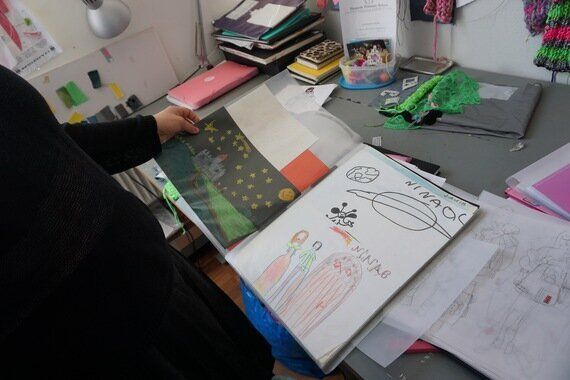

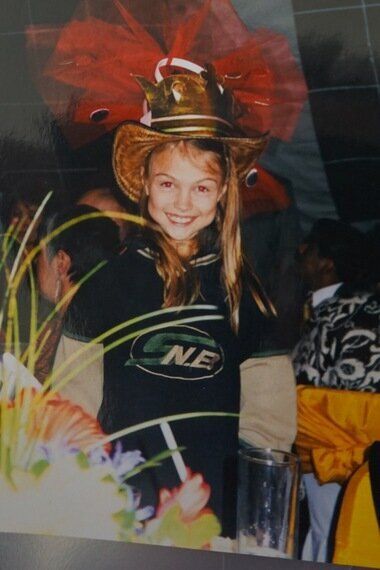
Nina's inspiration includes her school report, childhood drawings and photos
In order to compile a final collection based on memories and nostalgia, Nina has undertaken a huge sourcing exercise, buying jars of Barbie shoes on ebay and dividing them into colour-ways for embroidery, as well as POGs for a Paco Rabanne-style sheath constructed with umpteen 'o' rings. A myriad of 90's vintage clothing and blankets are piled up on her desk, from which her four final looks for her collection will be crafted. Her biggest challenge now, she says, is to navigate the garment construction process carefully to add refinement so that the end result is accomplished, yet youthful and fun.



Nina ponders her journey through her BA studies, including the term she spent studying at Ravensbourne in London. She says it opened her eyes to a fiercely competitive London scene and pushed her to her creative limits. Access to all manner of heat transfer, prototyping and digital embroidery machinery at Ravensbourne kick-started her enthusiasm for experimental textile applications. She hopes to intern at a fashion brand in London after graduating from her BA and before studying for her MA, which is virtually a right of passage in Denmark. She elaborates by explaining that both BA and MA degrees are paid for by the Danish government, and students' living expenses are also supported during their studies. This means that the BA is taught almost as a precursor to the MA, rather than an end point leading chiefly to employment. Nina's final collection is a bright and punchy textile, knit and embroidery adventure and I can't wait to see where it leads.
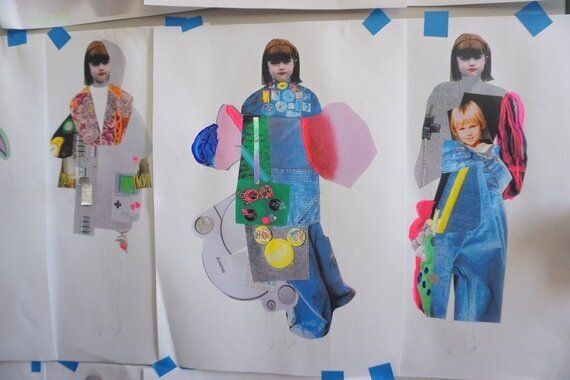
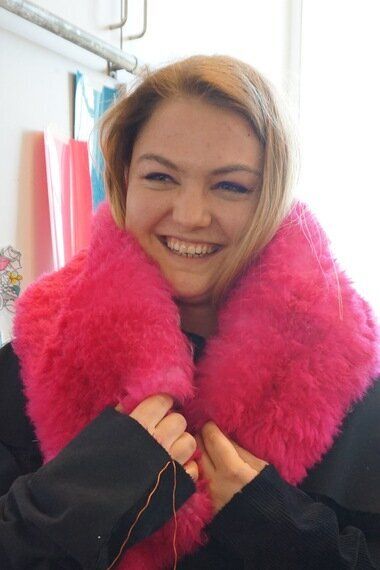
Nina and work in progress for her final collection "REWIND"
MA student Alexander Marstrand is working on a UN-inspired brief for his final project, provoking some interesting political and social questions. Alexander explains that from his research, he understands the UN to be, ostensibly, a unified group with equal representation and influence from all member countries - the UN flag looks down on all countries across the globe on an even plane. However, five countries maintain the right to veto resolution votes, and communication is conducted in only six languages: Arabic, Chinese English, French, Spanish and Russian. "I see the project as a comment on the current condition of the globe as such with my personal mix of melancholy and playfulness" Alexander says, of his collection in progress, entitled "UNspiration".
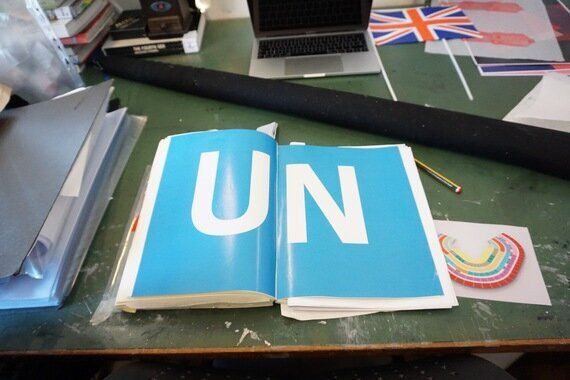
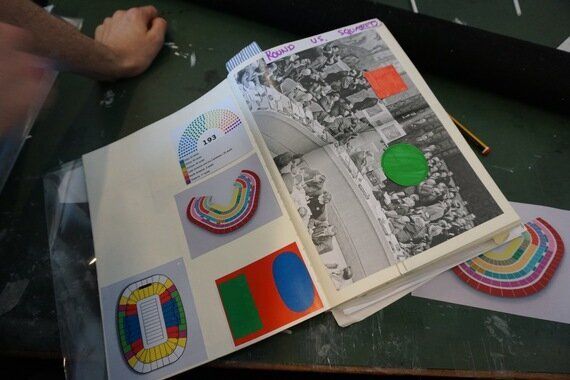

So how, fair and balanced is it? There is a hierarchical seating structure at the UN, which he references in his visual inspiration and sparks his consideration of who truly has a voice and who does not. He asks how the voices of those in Bangladesh, for example, are heard amongst the dominant voices of the west.
His visual inspiration extended to Swedish artist Bo Beskow and Matisse's cutouts, in addition to Picasso's surrealist works, which have informed Alexander's illustrations reinterpreting the flags and symbols of the UN countries. The cutout theme extends to his garment silhouettes and pattern making techniques, where he has sculpted 3D shapes onto a mannequin before draping fabric on top. He has then cut and pinned the fabric in a patchwork technique to use as pattern pieces for cutting and sewing his final garments.


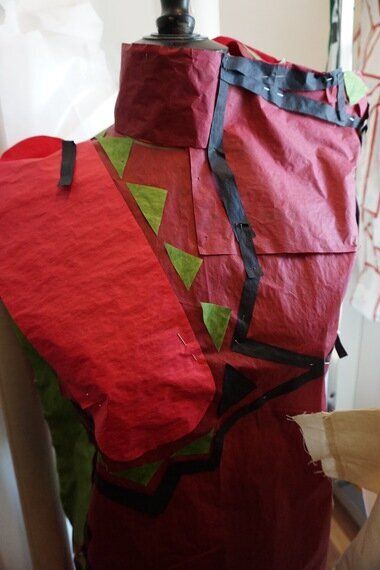

"UNspirational", by Alexander Marstrand
Already making and selling a printed silk scarves, Alexander has a foot in commercial fashion. He wants more platforms and opportunities, though, and explains his frustration at a lack of collaboration between music, arts and fashion in Copenhagen. "It's not like in London" he said. "Fashion East (an emerging designer presentation platform during London Fashion Week) would never happen here". Why? I ask. "It's a small city" he explains, and cross-collaboration is rare and difficult. In terms of creative scenes he says that "we don't really have subcultures and underground movements don't really mix. We have been trying to create a street party with the music institute for years (he gestures out the window to a nearby building), but it hasn't happened."
He also mentions what he believes to be a large gap between the fashion industry and fashion students in Denmark, seconded by Nina. A 'hands-off' approach makes it difficult for students to break into the industry, and to be part of professional events, such as the Copenhagen Fashion Summit. Without a fashion week, or a platform to show their final collections (along the lines of Graduate Fashion Week in London, for example) the challenges are clear. What these students do benefit from is immense support and work space, which is in very short supply at London-based fashion institutions, and the opportunity to study abroad, fully supported by the Danish government. In the current climate, where creative degrees are under serious threat as tuition fees skyrocket and would-be university students feel under pressure to gain vocational degrees in order to justify fees, this freedom from financial shackles is golden.
Header Image: Nina Balstrup "REWIND" collection in progress
All images: Techstyler
Originally posted on Techstyler.Fashion
Follow Techstyler on Instagram
